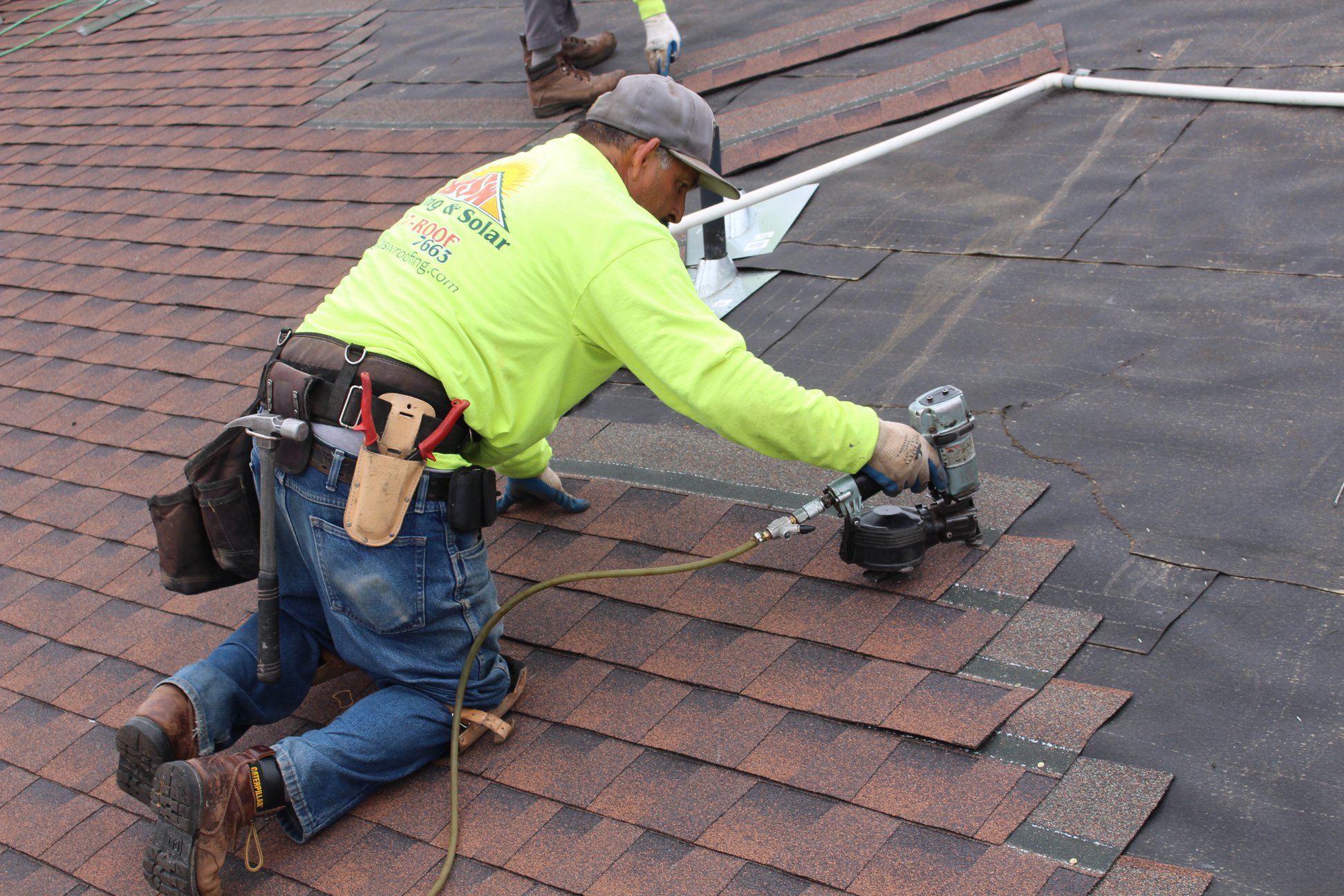A Comprehensive Consider Roofing Companies Gainesville Residents Recommend
A Comprehensive Consider Roofing Companies Gainesville Residents Recommend
Blog Article
Finest Practices for Ensuring Correct Roof Ventilation
A balanced intake and exhaust vent ratio, frequently 1:300, plays a critical role, with consumption vents preferably put at the reduced edge of the roofing for cool air entrance and exhaust vents at the peak for cozy air exit. Maintaining insulation away from vents is important to protect against air flow limitation.
Understand Air Flow Essentials
Properly comprehending air flow essentials is necessary for making certain the long life and efficiency of roofing systems. Efficient ventilation minimizes moisture build-up and temperature level extremes in the attic, both of which can lead to substantial architectural damages in time. A well-ventilated roofing system aids in avoiding common problems such as mold and mildew development, wood rot, and ice dams, which can endanger the integrity of the roof covering materials and the underlying frameworks.
The key objective of ventilation is to help with the activity of air, enabling a regular exchange in between the indoor and exterior settings. This balance is accomplished with a mix of consumption and exhaust vents that collaborate to maintain optimal air movement. Consumption vents, normally situated along the eaves or soffits, permit fresh air to enter the attic room room, while exhaust vents, usually situated at or near the roof covering ridge, enable warm, moist air to get away.
Key aspects influencing the effectiveness of roofing air flow consist of proper placement, appropriate sizing, and making certain that both consumption and exhaust vents are unblocked. Regular evaluation and upkeep are important to determine prospective blockages, damages, or inefficiencies in the ventilation system, consequently securing the roofing system's performance and sturdiness.
Sorts Of Roofing System Vents
Roofing system vents play an essential role in preserving effective attic ventilation and, by extension, the overall health and wellness of the roof covering system. Different kinds of roof covering vents are offered, each with special benefits customized to specific roof needs.

Soffit vents are mounted under the eaves and work in tandem with roofing vents to make certain a balanced intake and exhaust system. By enabling cooler air to get in from below, soffit vents help with the expulsion of hot air via top vents. Gable vents, located on the outside walls of the attic, offer another efficient remedy, specifically in homes with gable roof coverings.
Assess Your Existing Air Flow

Next, consider the age and condition of your roof covering materials and ventilation elements. Older systems may not adhere to existing building regulations or might have worn away gradually, lowering their efficiency. Conduct a complete assessment to identify any type of indicators of deterioration, such as corrosion, damages, or gaps that can jeopardize the system's efficiency.
Furthermore, gauge the attic temperature level and humidity degrees. High temperature levels and moisture can suggest poor air flow.
Installation Best Practices
Reliable installation of roofing ventilation systems is paramount for making certain ideal efficiency and durability. Correct installment starts with recognizing the specific ventilation needs of the roof covering and the building it covers. This involves determining the proper ratio of intake to exhaust vents, generally adhering to the 1:300 regulation, which specifies one square foot of ventilation for every 300 square feet of attic floor room.

The positioning of vents is just as vital. Intake vents must be mounted at the roofing system's reduced edge, usually in the soffits, to permit he has a good point awesome air to go into. Exhaust vents, on the various other hand, need to be mounted near or at the roof covering's height to promote the exit of warm, damp air. This produces a natural airflow that helps keep temperature and dampness balance within the attic room room.
Seal all vent links thoroughly to stop air leaks and possible water infiltration. Use premium products and follow supplier standards to guarantee durability and effectiveness. Furthermore, integrating ridge vents with baffles can dramatically boost airflow efficiency by protecting against wind-driven rainfall and snow from getting in the attic room.
Ultimately, accurate installation of roof air flow systems minimizes possible issues such as mold and mildew growth, ice dams, and architectural damage, ensuring the roofing system's stability and the structure's total health and wellness.
Normal Upkeep Tips
Uniformity in maintenance techniques is fundamental to ensuring the long-term efficiency of roofing air flow systems. Throughout these inspections, guarantee that vents are free of debris, nests, and other obstructions that might restrain air flow.
Make use of a soft brush or a vacuum to get rid of dirt and particles from intake and exhaust vents. Be cautious not to harm the vent displays or louvers during the procedure.
Proper insulation is equally vital. Guarantee that attic room insulation does not block the vents, as this can significantly restrict air movement. Reposition or change it to preserve an efficient barrier. if any type of insulation has actually changed or worked out.
Lastly, replace any kind of damaged or missing out on components immediately. Damaged vents, broken roof shingles, or tatty best site flashing can all add to insufficient ventilation and needs to be attended to without delay. Routine maintenance makes certain that the roof covering air flow system operates optimally, therefore expanding the life-span of the roofing system itself.
Conclusion
Making sure appropriate roofing ventilation is critical for maintaining the performance and durability of a roof. Adherence to the 1:300 intake and exhaust vent proportion, combined with the tactical placement of vents, is essential. Normal semiannual inspections, particles cleaning, and ensuring insulation does not obstruct air movement are important methods. Implementing these best practices will certainly promote a well-ventilated roof, thereby reducing possible problems connected to moisture buildup and excessive warmth, eventually prolonging the roofing's life expectancy.
A balanced consumption and exhaust air vent ratio, typically 1:300, plays a pivotal function, with intake vents preferably positioned at the lower edge of the roofing system for awesome air entrance and exhaust vents at the optimal for cozy air exit. Consumption vents, commonly located along the soffits or eaves, enable i was reading this fresh air to get in the attic area, while exhaust vents, usually positioned at or near the roof ridge, enable hot, damp air to escape.
Soffit vents are set up under the eaves and job in tandem with roof covering vents to make sure a balanced consumption and exhaust system. By permitting cooler air to get in from below, soffit vents help with the expulsion of warm air through upper vents. Adherence to the 1:300 intake and exhaust air vent ratio, combined with the calculated positioning of vents, is necessary.
Report this page